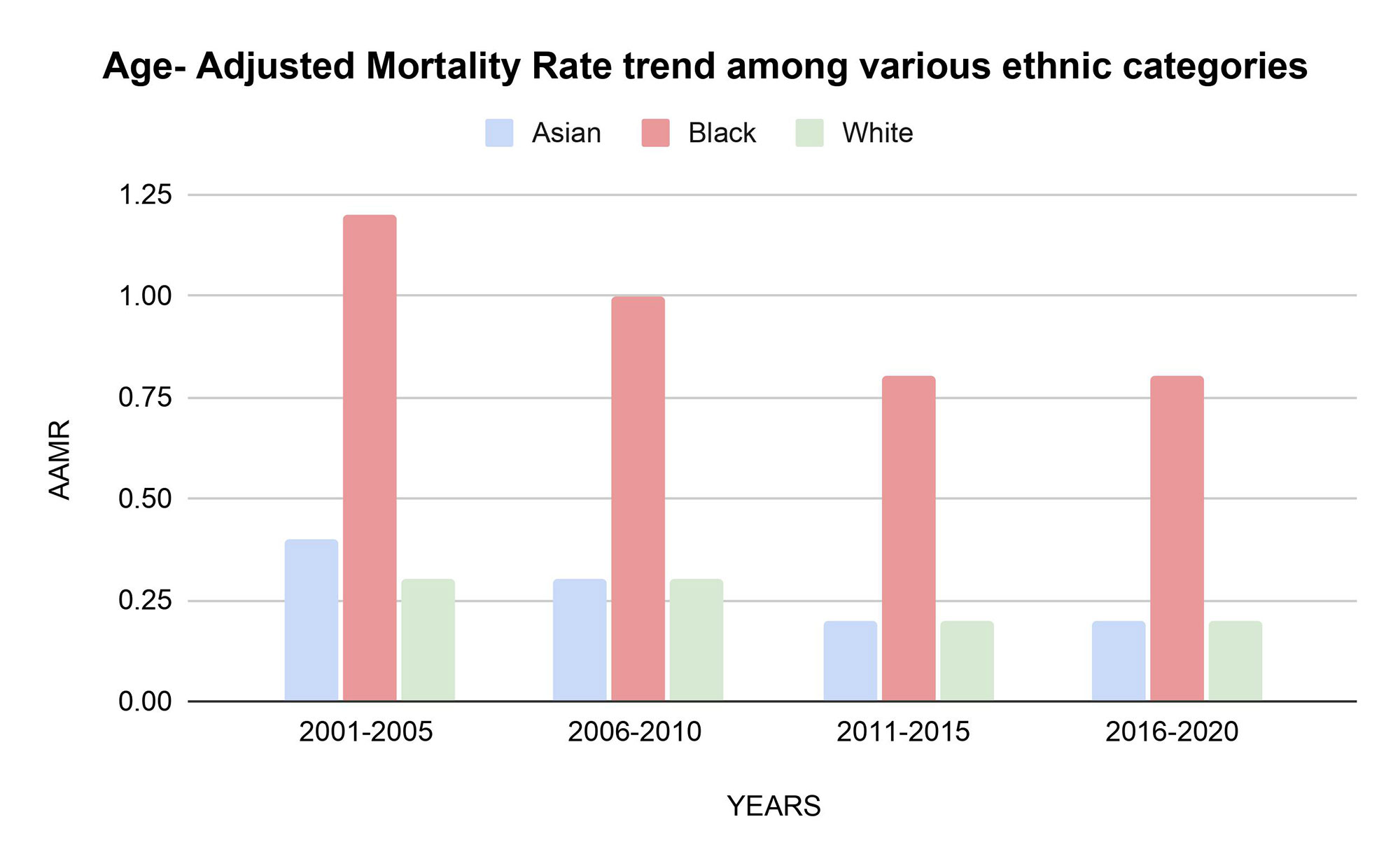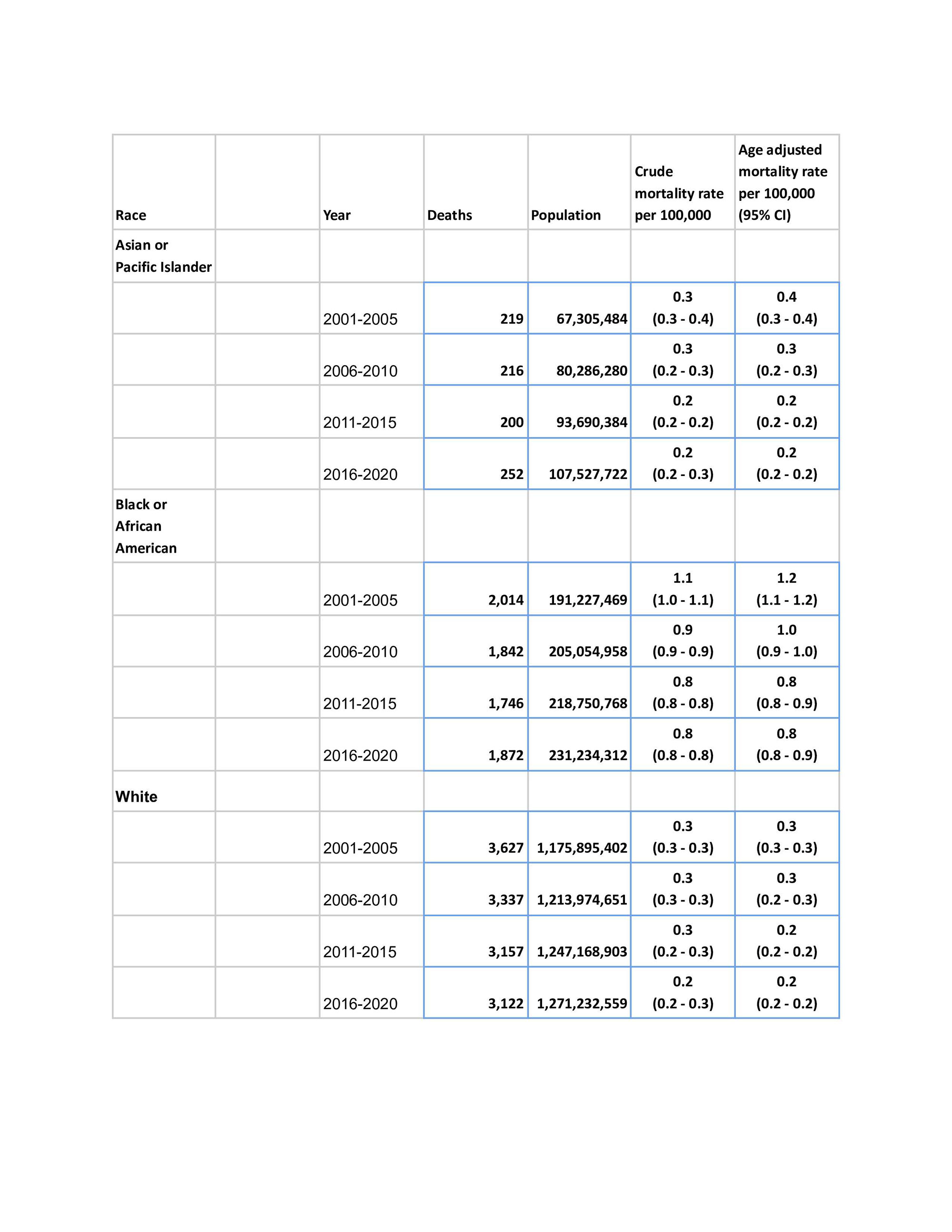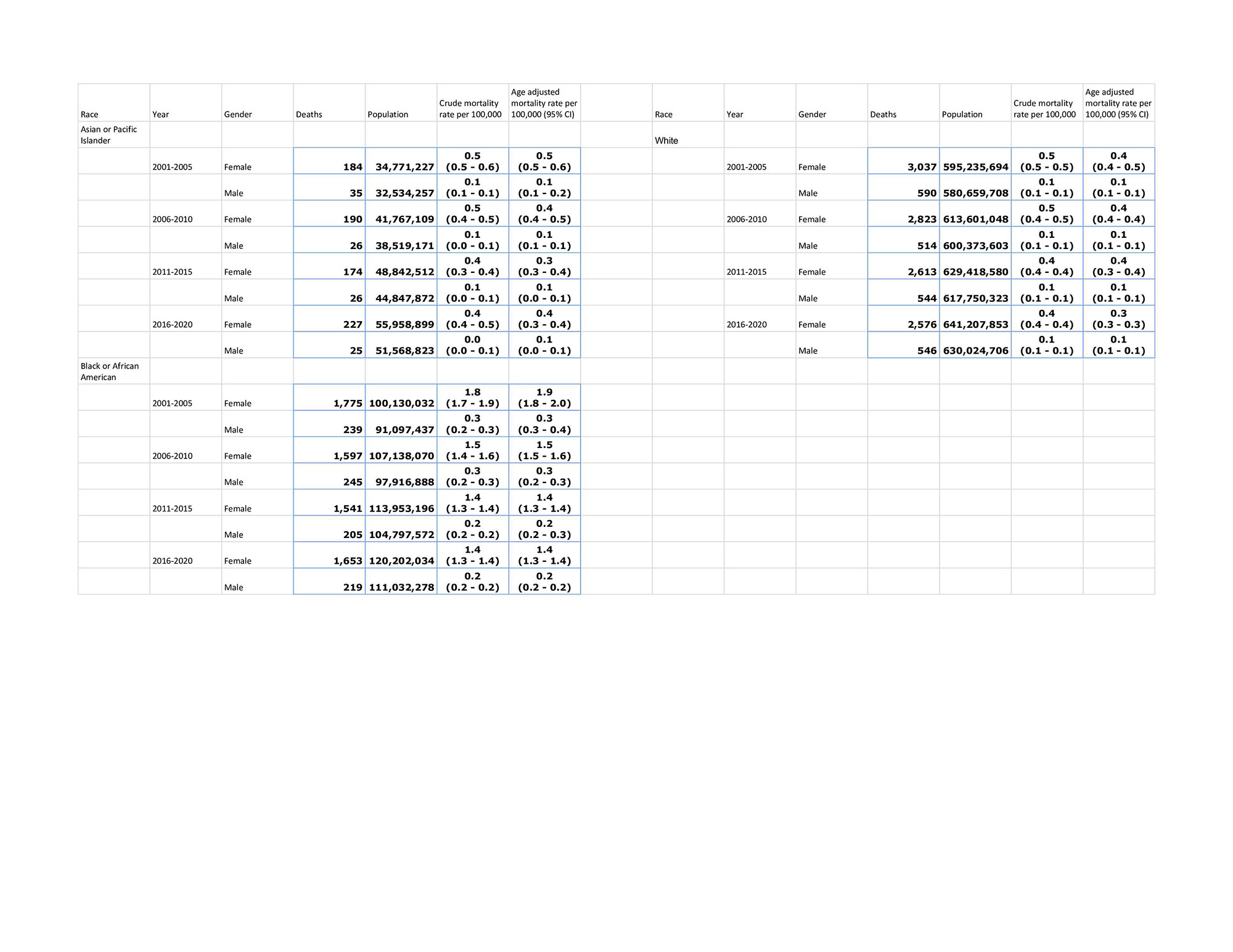Session Information
Session Type: Poster Session D
Session Time: 1:00PM-3:00PM
Background/Purpose: Racial disparities in SLE have been well described. Blacks are disproportionately affected, and have a higher incidence, disease severity, and mortality compared to Whites, with the disease being even more severe in black females compared to White or Asian females, and males. Death rates increased by approximately 70% from 1979-to 1998 among black women aged 45-64 years as reported by the Centers for Disease Control and Prevention (CDC) followed by a decline thereafter. The occurrence of deaths at an early age among black compared to white women is also documented. Since the most recent mortality trends are lacking, we sought to analyze the temporal trends of SLE-related mortality among different racial groups across the United States from 2001- to 2020.
Methods: Using CDC’s Wide-ranging Online Data for Epidemiologic Research (WONDER) database, deaths related to ICD-10 code M 32.1 (SLE with organ or system involvement) were queried with no age restrictions. The mortality data among different races (American Indians or Alaska natives, Asian or Pacific Islander, Black or African American, and White) across the United States were retrieved from 2001-to 2020. This data was further stratified into 5-year intervals.
Results: A total of 887, 7474, and 13,243 deaths were reported from SLE with organ or system involvement among Asian, Black, and White races respectively from 2001 to 2020. A meaningful analysis for American Indians or Alaska Natives was not performed due to the small number of patients. The Age-Adjusted Mortality Rate (AAMR) was higher among Blacks throughout the 20-year analysis as compared to other races. AAMR decreased by 50 % among Asians and 33.3% among both White and Black populations over these two decades (Table 1). There is no change in AAMR from 2011-to 2020 for all races (Figure 1). Both Female and Male gender in the Black race had higher mortality compared to other races (Table 2).
Conclusion: This population-based analysis demonstrates that the overall AAMR related to SLE with organ/system involvement has shown a downward trajectory among different races from 2001-to 2020 across the U.S. However, no change in trends has been observed from 2011 onwards. The significantly higher mortality among Blacks relative to White and Asians is concerning. The persistent ethnic disparities and no further decline in mortality after 2010 despite substantial improvement in SLE management, increased awareness and enhanced disease surveillance needs further investigation. The limitation of our study is the dependence on data from the online death registry recorded by health care workers which can misclassify the patient’s self-identity and inability to analyze American Indians or Alaska Natives.
To cite this abstract in AMA style:
Kaur I, Jagdey H, Mirza h, Mughal W, Bansal P. Temporal Trends of SLE Mortality Among Various Ethnic Categories Across the United States: 2001-to 2020 Analysis from WONDER Database [abstract]. Arthritis Rheumatol. 2022; 74 (suppl 9). https://acrabstracts.org/abstract/temporal-trends-of-sle-mortality-among-various-ethnic-categories-across-the-united-states-2001-to-2020-analysis-from-wonder-database/. Accessed .« Back to ACR Convergence 2022
ACR Meeting Abstracts - https://acrabstracts.org/abstract/temporal-trends-of-sle-mortality-among-various-ethnic-categories-across-the-united-states-2001-to-2020-analysis-from-wonder-database/



